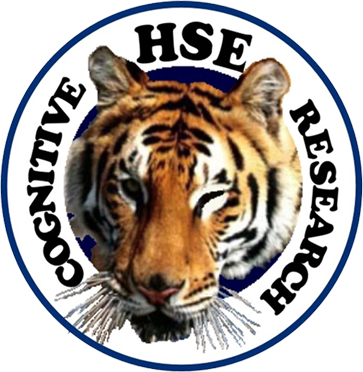Major Research Projects
Ensemble summary statistics
The attentional and working memory limitations do not allow for processing of the vast amount of visual information constantly being perceived. To overcome these limitations, the visual system represents information about a large number of objects in a “compressed” form - in the form of summary ensemble statistics. Even when a large number of objects is presented for a very short time, people are able to rather accurately report the number of these objects, the average value, the variance of a particular feature (for example, size or color). Furthermore, the visual system can represent the values of all objects’ features and use the information about the distribution of these values for more complex processes.
Our research topics:
-
Characteristics of perception outside the focus of attention
-
Impact of the information in the focus of attention on the ensemble perception
-
Impact of multiple objects’ feature distributions on the rapid categorization of multiple objects and visual search
-
Parallel and independent processing of various ensemble statistics
-
Ensemble perception in depth
Visual attention
In everyday life, people perceive a very large amount of visual information. However, deep processing of all information would require an unjustified amount of cognitive resources. Visual attention is the process of selecting a portion of the entire visual stimulation for subsequent deep processing.
Our research topics:
-
Dead zone of attention
-
Mechanisms and methods of visual attention control
-
Binocularity and visual search
-
Visual search for changes in the scene and long-term memory
Feature binding
Features of objects that are processed mostly independently and in parallel, are combined into representation of the object during the binding process. If the binding process works flawlessly, then we correctly perceive and memorize objects. When the work of the process is impaired, it leads to failures in perception and memory — binding errors.
Our research topics:
-
Binding errors in visual long-term and working memory
-
Effect of categorical similarity on object-spatial binding errors in visual working memory
-
Illusory conjunctions in the visual periphery
Visual working memory
Visual working memory allows us to maintain a limited amount of information for a short period of time, as well as manipulate this information for current tasks. Modern research in this area is devoted to various ways of measuring the capacity of visual working memory, as well as its organization and interaction of structural units.
Our research topics:
-
Independent features storage in the visual working memory
-
Capacity and accuracy of visual working memory for objects and ensembles
-
Binding errors in the visual working memory
-
Influence of ensemble information on the visual working memory
Visual long-term memory
Visual long-term memory allows for storage of visual information for a long time. One of the modern models suggests that information in visual long-term memory is organized as a hierarchy of representations. At the lower level of such a hierarchy are representations of attributes (for example, object colors), at the upper level are gist-representations about a group of objects that contain summary statistics regarding this group of objects, and in the middle are object representations.
Our research topics:
-
Organizational structure of information in visual long-term memory
-
Specificity of gist representation forming
-
Binding errors in visual long-term memory
Have you spotted a typo?
Highlight it, click Ctrl+Enter and send us a message. Thank you for your help!
To be used only for spelling or punctuation mistakes.
